As AI-generated answers become a bigger part of search, one question matters more than ever:
What makes a page trustworthy enough for AI to use as a source?
To find out, we analyzed 57,000+ URLs across 1,591 keywords, comparing two groups:
- Articles cited in AI Overviews
- Articles not cited in AI Overviews
The goal was to see what separates the content that AI chooses to cite from the content it ignores.
What we found reveals a consistent pattern in how AI Overviews select their sources, and what that means for writers, SEOs, and brands that want to be part of those answers.
How we measured what AI Overviews really cite
To uncover what makes some pages more likely to be cited by AI, our Data Science team analyzed 1,591 keywords and 57,253 URLs, comparing what AI-generated summaries include with what human-written pages publish.
Each keyword came with its own AI Overview (AIO) and the top 10 organic results in Google.
In our analysis we focused on facts: the concrete pieces of information that make up a page’s substance.
For example, in an article about vitamin D benefits, one fact might be “Vitamin D supports immune system function,” while another could be “It’s produced naturally when skin is exposed to sunlight.”
These are distinct, verifiable statements that together form the knowledge an article conveys.
Why facts?
Because AI Overviews don’t copy text; they reconstruct answers by combining facts from across multiple sources.
Measuring factual coverage shows how “complete” a page looks through AI’s lens.
In total, we analyzed 1.85 million fact appearances across thousands of pages; enough to identify clear, repeatable patterns in how AI chooses its sources.
AI Overviews consistently cite content that covers more facts
The first pattern in the data was clear:
Pages cited in AI Overviews consistently cover more facts than those that aren’t.
On average, cited pages had a Fact Coverage Ratio of 0.31, compared to 0.24 for non-cited ones, a 29% increase in factual completeness.
This means AI Overviews systematically select pages that explain topics more thoroughly, not just those that happen to rank higher in search.
Looking at the median makes the contrast even sharper: The typical AIO-cited article covers 62% more facts than the typical non-cited one.
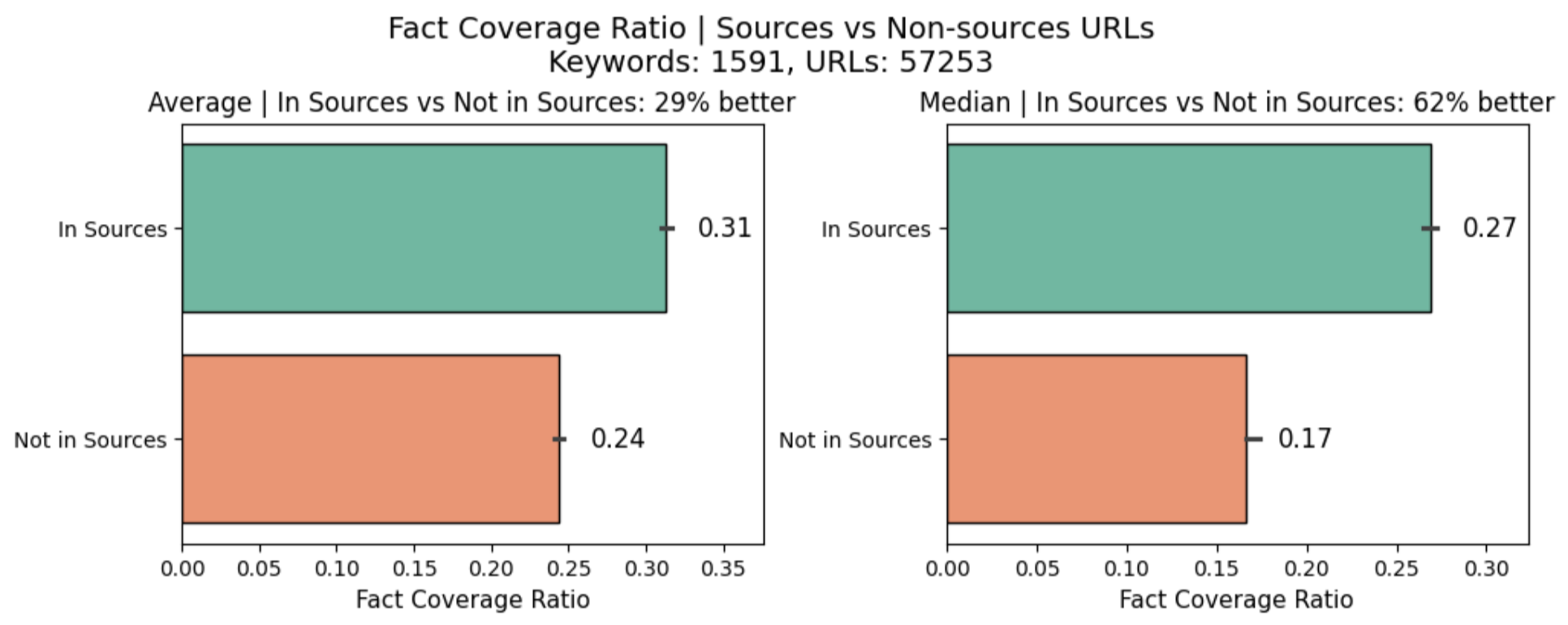
So it’s not just a few exceptional sites skewing the average. The majority of cited pages are genuinely more complete.
In practice, this suggests that AI models reward coverage and clarity over brevity.
The more dimensions of a topic your content addresses—subtopics, examples, and supporting details—the more likely it is to be referenced.
The most complete pages cover 2× more facts
Some pages don’t just get cited once; they’re cited every time an AI Overview is generated for a keyword.
We call these core sources. They are the pages AI consistently reuses as references.
In this part of the analysis, based on a smaller sample of 110 keywords, we compared three types of pages:
- Pages cited in every AI Overview for a keyword (core sources)
- Pages cited occasionally (non-core sources)
- Pages never cited (non-sources)
The difference was striking.
Core sources covered an average of 0.42 of all key facts, compared to 0.34 for non-core sources and 0.23 for non-sources—nearly 2× higher factual coverage between the top and bottom groups.
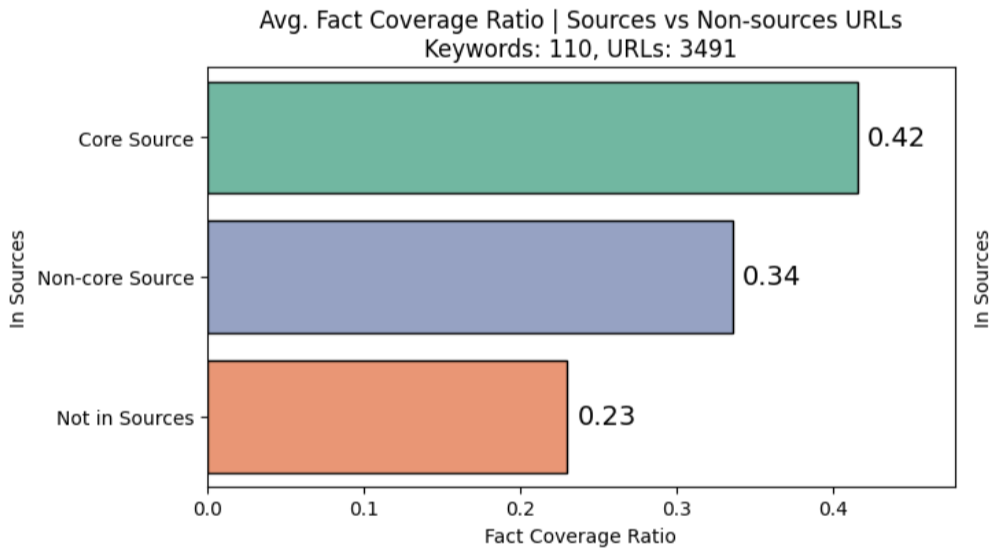
These comprehensive pages go beyond surface points, connect related ideas, and give readers the full context.
And many of them come from the same websites, suggesting that AI learns to trust entire domains that consistently publish complete, reliable information.
For creators and SEO teams, the takeaway is simple:
Own your main topics, keep your strongest content updated, and build supporting articles around it. That’s how you become the site AI keeps returning to.
Most content still misses the majority of key facts
When we looked at all 57,000+ URLs, 28% of pages covered almost none of the key facts identified in their topic’s AI Overview.
Only a small fraction reached high coverage levels, and those were the same pages most likely to be cited.
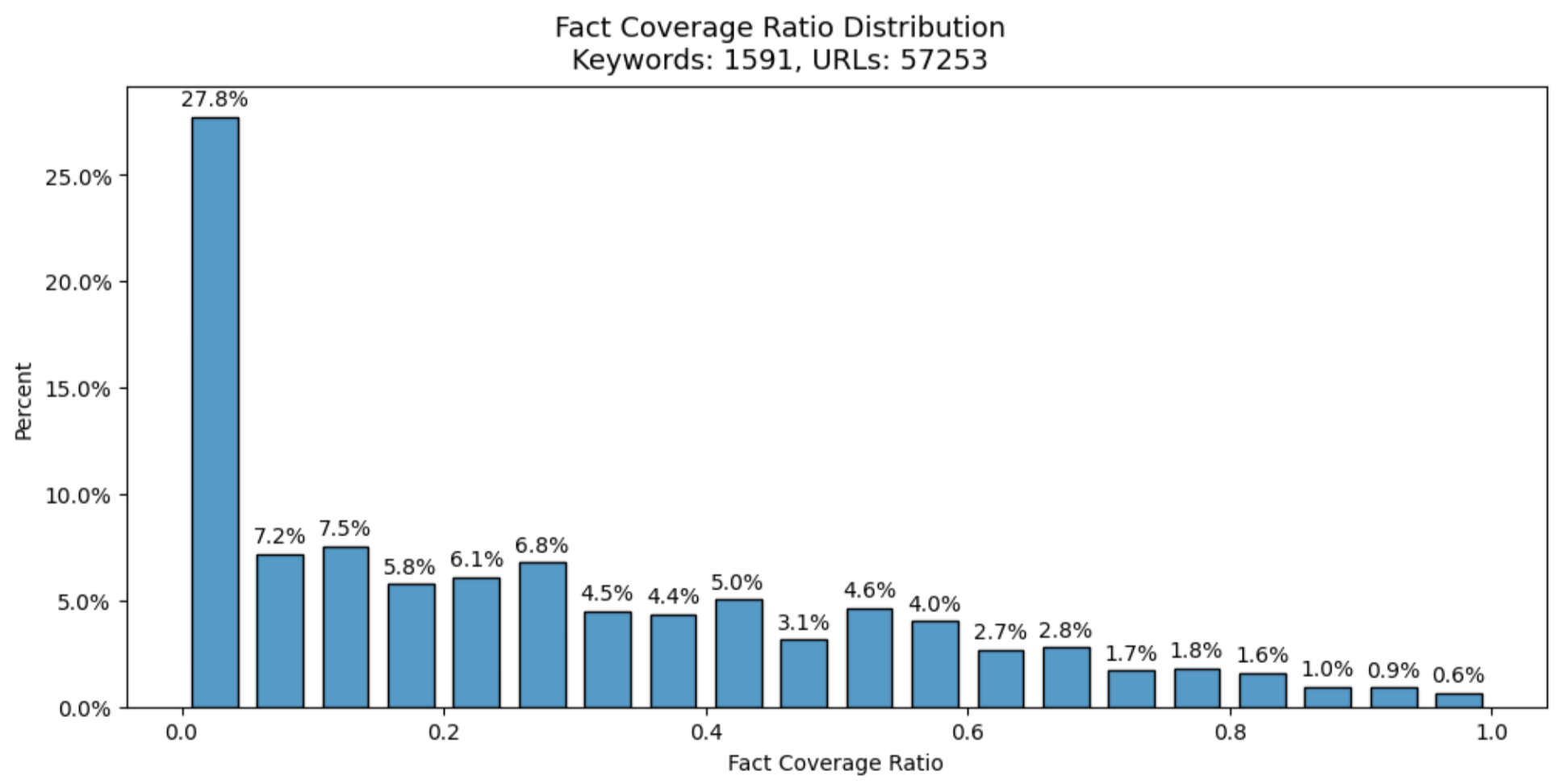
The distribution tells a simple story:
Most content scratches the surface. Only a few pages explain topics thoroughly enough to earn trust from AI systems.
Even among top-ranking results, most articles leave significant factual gaps: missing context, entities, or subtopics that AIOs consider essential for a complete answer.
That gap also creates opportunity.
Since AI Overviews combine facts from multiple sources, every missing detail is a chance to be the page that fills it.
Covering those overlooked points can make the difference between being ignored and being cited.
How to become the source AI relies on
As we can see from the data, most pages still leave major gaps. That gap is your opportunity to stand out.
Here’s how to do it step by step:
1. Write comprehensive content
Comprehensive content isn’t about length; it’s about usefulness.
It covers essential facts, connects ideas, and adds missing details so readers don’t need another source.
Every fact you include increases both your relevance and your chances of being cited by AI.
With Surfer’s Facts feature (inside Content Editor), you can make this process data-backed.
It shows which facts top-ranking and cited pages include that your content doesn’t, helping you update existing pages or create new ones with full topical coverage.
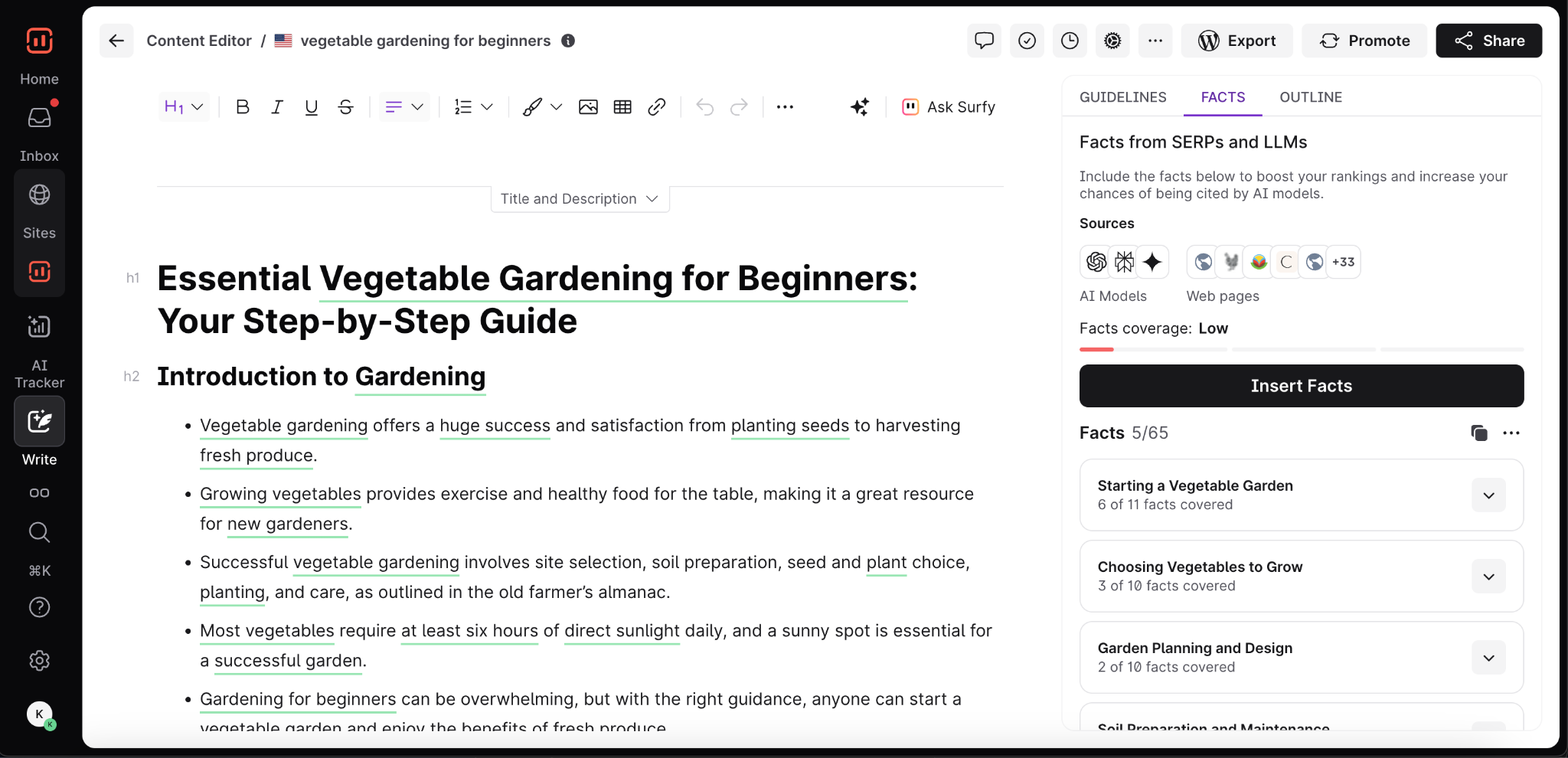
2. Build topical depth across your site
AI Overviews don’t just reuse strong articles, they reuse strong sites.
Our findings show that the same domains appear again and again, suggesting that topical depth drives long-term visibility.
To build topical depth, create a network of connected articles that explore your topic from every angle.
Definitions, comparisons, FAQs, and related guides all signal that your site truly understands the subject.
Surfer’s Topical Map helps you plan that structure.
You can spot gaps, discover related themes, and plan what to publish next, so you build topical authority one piece at a time.
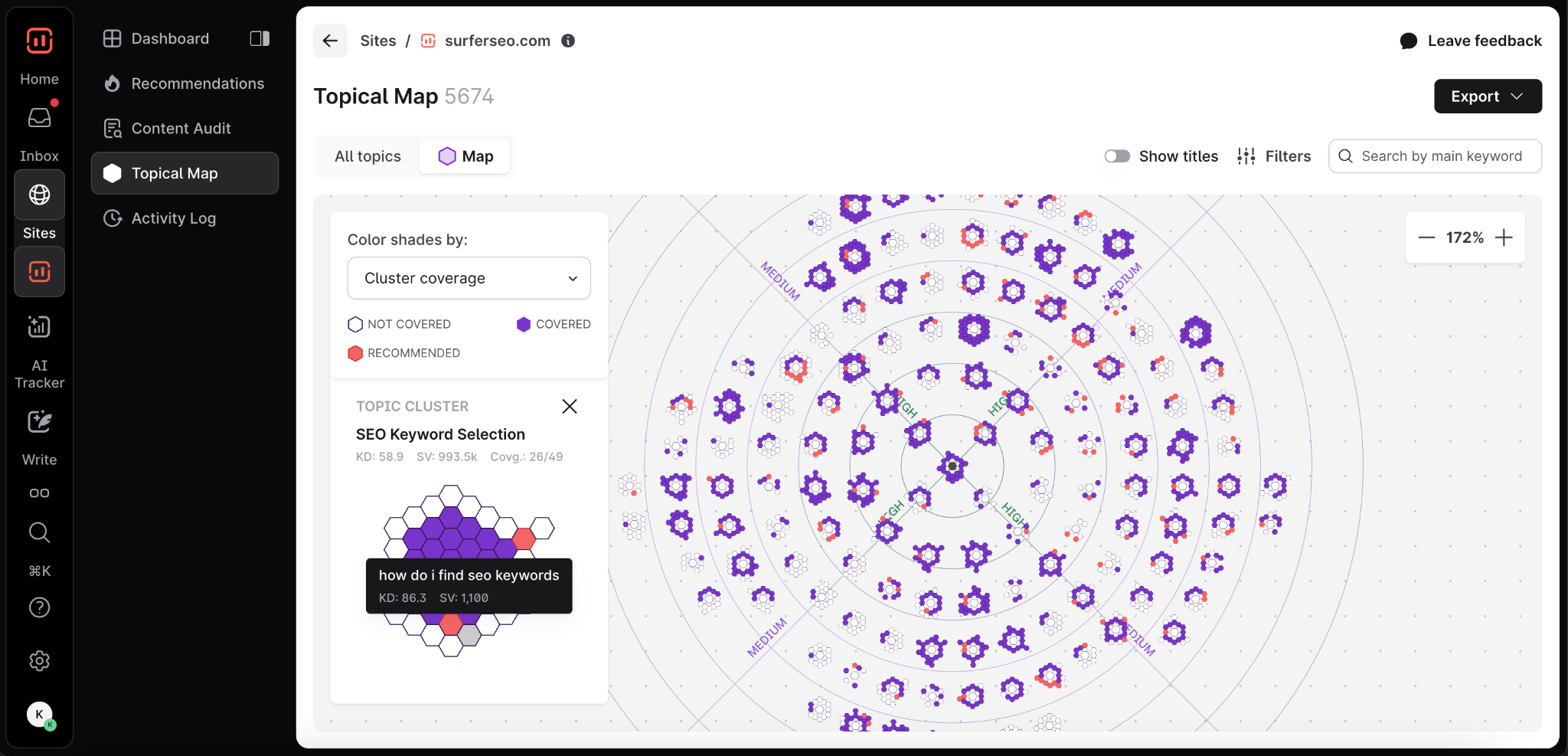
3. Track and maintain your AI visibility
Completeness changes over time. New facts appear, competitors update their pages, and AI models adjust which sources they trust.
To keep your content visible, you need to track where it’s being mentioned and where it’s missing.
With Surfer’s AI Tracker, you can see how often your pages or brand appear in Google AI Overviews, ChatGPT, and Perplexity, which sources AI pulls from, and where your competitors are getting cited instead of you.
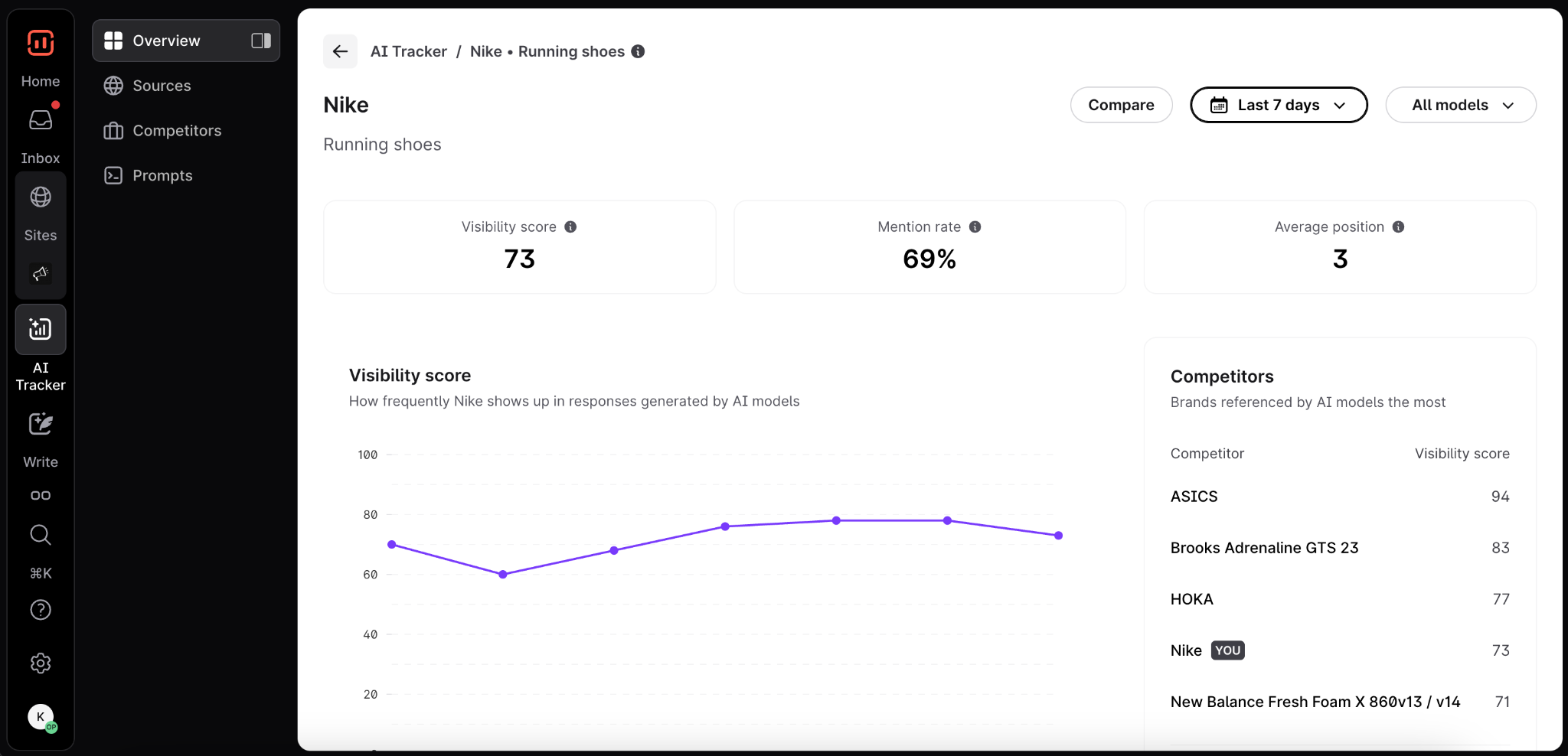
If your content isn’t showing up, those are clear signals to update, expand, or strengthen coverage around the topic.
Final thoughts
Our analysis makes one thing clear: AI doesn’t choose sources at random.
It consistently favors the content that covers more of the topic, connects more facts, and leaves fewer gaps.
That’s good news for content teams, because completeness isn’t a fixed trait; it’s a process you can build and maintain.
By writing comprehensive pages, expanding topical depth, and tracking your AI visibility, you can become the source AI relies on.
With Surfer, you can do it all in one workflow, from identifying missing facts and strengthening topic coverage to tracking your visibility in AI search.
.avif)

